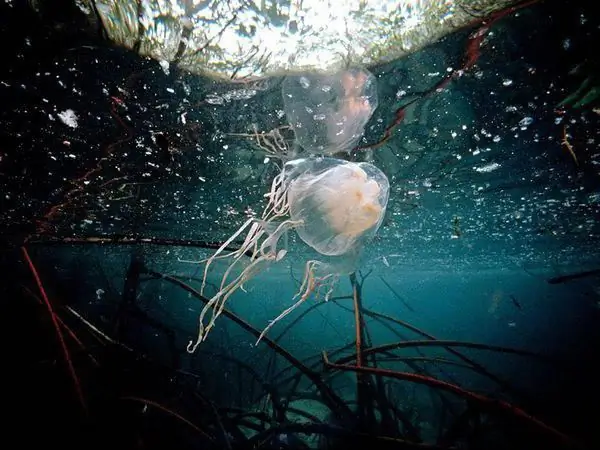- Author Henry Conors [email protected].
- Public 2024-02-12 02:54.
- Last modified 2025-01-23 09:07.
Dunka is a mushroom that belongs to pigs. Previously, it was considered conditionally edible and was eaten. However, now it has been classified as a poisonous macromycete. In some modern reference books in the description you can find the definition as deadly poisonous. The people called him "Dunka". The mushroom also has a scientific name - thin pig. On the territory of the Russian Federation, several deaths were recorded after eating it.

Dunka mushrooms contain toxic substances such as lectins. They may also contain muscarine. During heat treatment, these substances are not destroyed. Even repeated boiling, which some mushroom pickers resort to, does not help. After the frequent use of these macromycetes in food in humans, the composition of the blood may change. It is dangerous to life and he alth.
Dunka is a mushroom that should not be eaten regularly. Under the influence of harmful substances in the blood, the formation of agglutinin antibodies begins, which react to macromycete antigens (we mean not episodic receptions, but constant ones). Agglutinins accumulate in the body over time. When their number exceeds a certain threshold, they begin to destroy red blood cells.
Specialists say that the period of onset of poisoning depends on the characteristics of a particular organism. Someone constantly eats thin pigs, and poisoning occurs only after a few years. However, some people are hypersensitive to agglutinins, so poisoning can occur immediately and be fatal. This macromycete is more dangerous than the traditional, well-known poisonous mushrooms. Although many mushroom pickers do not recognize this and consider dunka conditionally edible. Eating this mushroom in combination with alcohol greatly increases the level of toxins in the blood.

Description
The mushroom cap has a diameter of 3-12 cm. Initially, it is convex (the edges are felted and wrapped), and then depressed and flattened, slightly funnel-shaped. The edge is lowered, straight ribbed or fenced, often fibrous. The surface of the cap is velvety, dry, sticky and shiny in wet weather. Its color is olive-brown or ocher-brown, darkens when pressed. Dunka is a mushroom that has medium, ocher-brown descending plates, somewhat lighter in color than the cap. When pressed, they also darken. Spore powder is brown. The leg of this macromycete is short (cylindrical), smooth, sometimes narrowed towards the base, up to 2 cm in diameter and up to 6 cm long. Its color is lighter than the cap. The pulp, at first dense and soft, becomes friable over time. Its color is yellowish-brown, it darkens on fractures and cuts. Dunka mushrooms(photos should be carefully studied) are often wormy, like other unconditionally edible gifts of the forest.

Habitat
Dunka is a mushroom that can be found in the forest from mid-June to November. This macromycete can be found in forests, in shady, damp places. It is often found in light forests, in park areas, in vegetable gardens, and sometimes even on tree trunks. This mushroom grows singly and in families. Prefers shrubs, young birch forests, oak forests. It can be found on the outskirts of sphagnum bogs, on the edges, not far from mossy pines and spruces.






